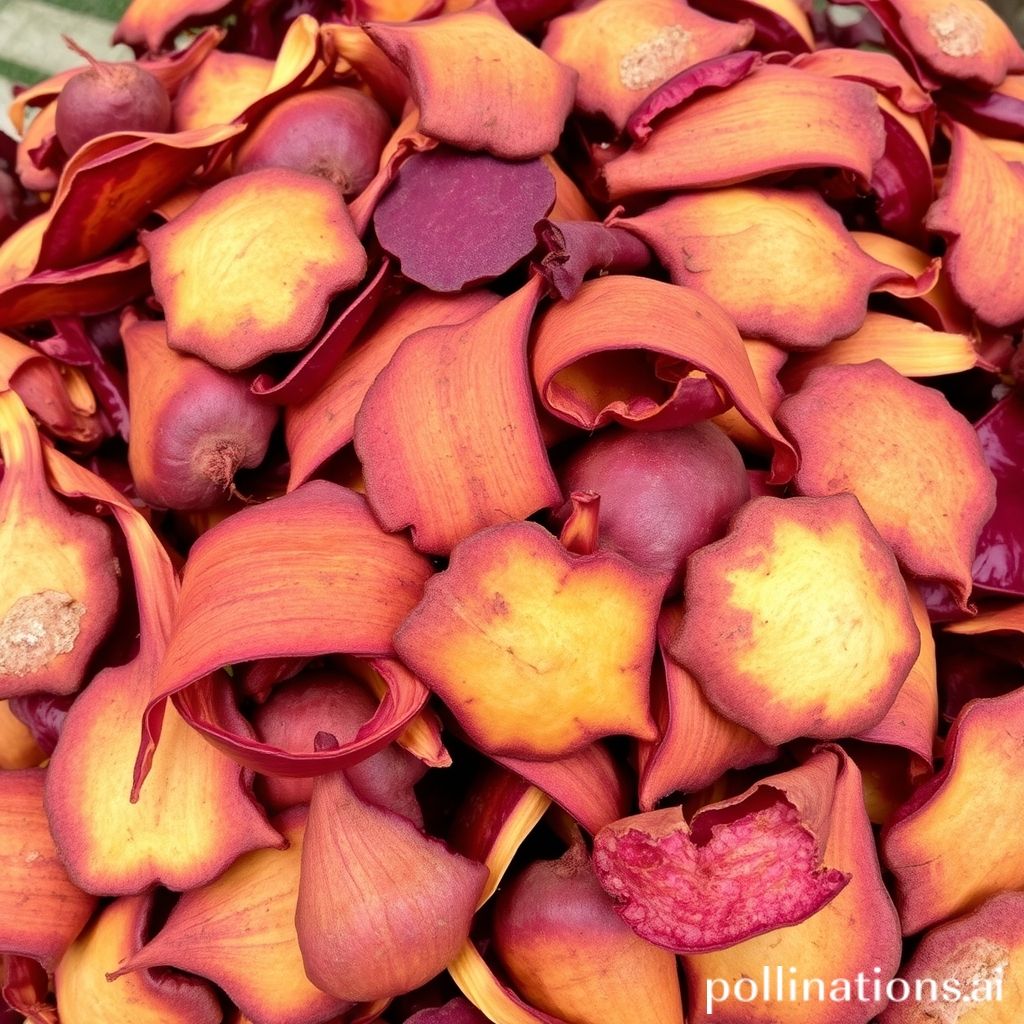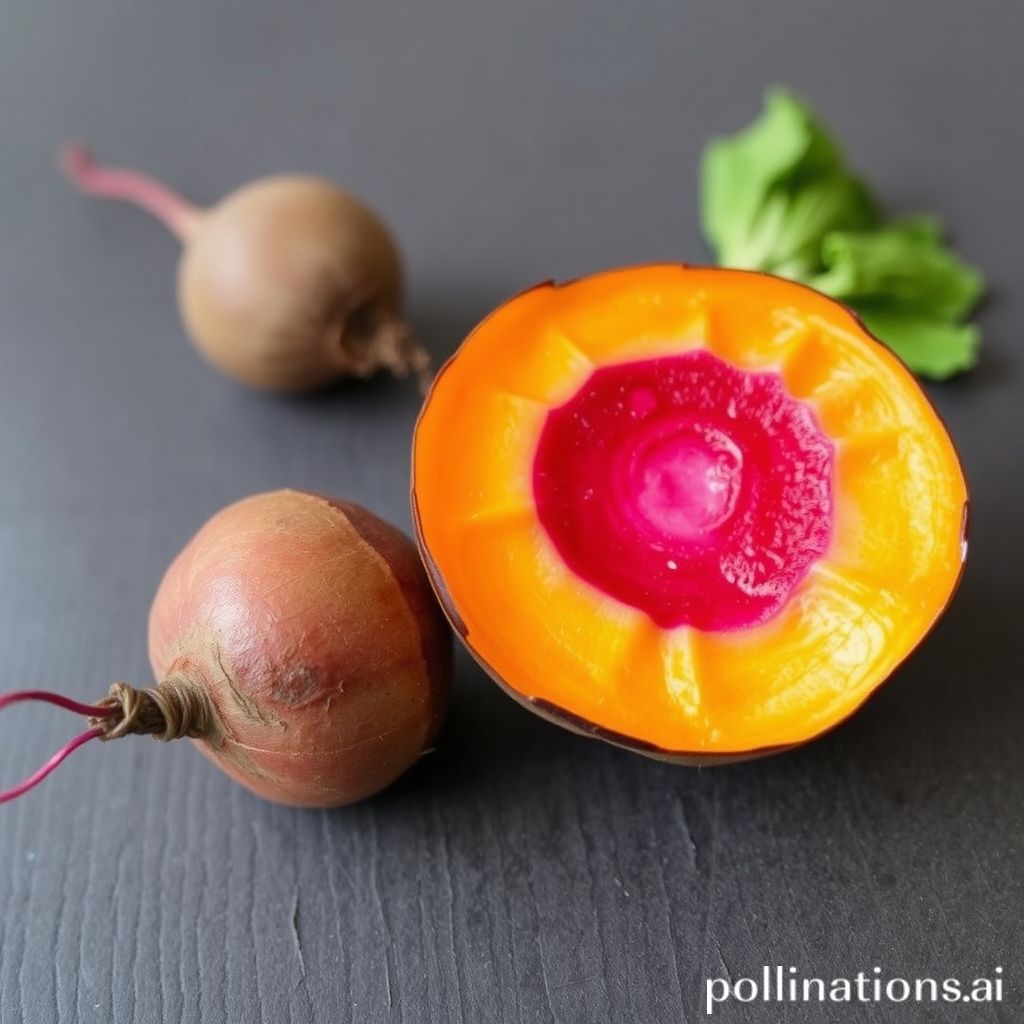What Is The Use Of Beetroot Peel?
[su_note note_color=”#fb8e00″ text_color=”#000000″ radius=”12″]
Beetroot peels are often discarded without a second thought, but did you know that they have a multitude of uses beyond their vibrant hue? Instead of tossing them in the trash, consider repurposing these versatile peels in various ways. From adding flavor and color to your culinary creations to harnessing their natural properties for home remedies, beetroot peels can be a valuable resource in your kitchen and beyond.
This article will explore the numerous benefits and creative applications of beetroot peels, providing you with inspiration and ideas for utilizing this often overlooked part of the vegetable. Discover the untapped potential of beetroot peels and unlock a world of possibilities.
[su_box title=”
[/su_box]

Cooking with Beetroot Peel
1. Uses of Beetroot Peel in Cooking
Beetroot peel is not only vibrant but also nutrient-rich, making it a versatile ingredient that can enhance the flavors and nutritional value of your dishes. Discover creative ways to use beetroot peel in your cooking:
- Enhancing soups and stews: To add a subtle earthy flavor and a pop of vibrant color to your soups or stews, simply wash and chop the beetroot peel into small pieces and add them to your favorite recipes.
- Making vegetable stock: Don’t waste the beetroot peel! Instead, use it to create a flavorful vegetable stock. Combine the peel with other vegetable scraps like onion skins, carrot tops, and celery leaves. Simmer them in water to create a fragrant and nutritious base for your soups and sauces.
- Infusing vinegar or oil: Give your dressings, marinades, or pickling recipes a unique twist by infusing vinegar or oil with beetroot peel. Place the peel in a bottle or jar and fill it with vinegar or oil. Let it sit for a few weeks to infuse the flavors. The result will be a vibrant and flavorful ingredient that will elevate your culinary creations.
[su_highlight background=”#f6b40f”]Expert Tips: Use beetroot peel to enhance soups, make vegetable stock, or infuse oil/vinegar. Adds flavor and nutrients.[/su_highlight]
Natural Remedies Using Beetroot Peel
1. Health Benefits of Beetroot Peel
Beetroot peel is not only delicious but also offers numerous health benefits. Here are some of the key advantages:
- Antioxidant properties: Beetroot peel is rich in antioxidants, which help fight free radicals and reduce oxidative stress in the body.
- Anti-inflammatory effects: The peel of beetroot contains compounds that have anti-inflammatory properties, reducing inflammation and alleviating related symptoms.
- Promoting heart health: Beetroot peel contains nitrates that can lower blood pressure and improve cardiovascular health.
2. DIY Remedies Using Beetroot Peel
Instead of throwing away beetroot peel, you can repurpose it for various DIY remedies. Here are a few creative ways to use beetroot peel:
- Facial masks for glowing skin: Create homemade facial masks using beetroot peel to rejuvenate the skin, improve its texture, and provide a natural glow.
- Hair treatments for shiny hair: Nourish and add shine to your hair by making a hair rinse or mask using beetroot peel for healthier and shinier hair.
- Natural dye for fabrics: Utilize beetroot peel as a natural dye for fabrics, giving them a beautiful pink or purple hue and making them unique and eco-friendly.
| Benefit | Usage |
|---|---|
| Antioxidant properties | Consume beetroot peel or use it in recipes |
| Anti-inflammatory effects | Apply beetroot peel topically or consume it |
| Promoting heart health | Incorporate beetroot peel in your diet or make beetroot juice |
| Facial masks for glowing skin | Mix beetroot peel with other natural ingredients and apply it on the face |
| Hair treatments for shiny hair | Create hair rinses or masks with beetroot peel and apply them to the hair |
| Natural dye for fabrics | Boil beetroot peel and use the resulting liquid as a dye for fabrics |
Creative Uses for Beetroot Peels
Beetroot peels are often overlooked, but they have many creative uses beyond just consuming the beetroot itself. Here are some innovative ways to repurpose beetroot peels:
1. Crafting with Beetroot Peels
If you’re artistic, you can use beetroot peels to create unique and natural dyes for your artwork. To do this, simmer the peels in water until the color is released, strain the liquid, and use it to dye fabric or paper. The vibrant hues obtained from beetroot peels can add a beautiful touch to your creations.
Another way to unleash your creativity is by using beetroot peels to create decorative patterns on paper or fabric. Simply dip the peels in paint or ink and press them onto the surface. This will result in a beautiful, organic design that adds an artistic flair to any project.
2. Gardening with Beetroot Peels
Beetroot peels can also benefit your garden. One way to utilize them is by using them as compost or mulch. Chop the peels into small pieces and mix them into your compost pile or spread them as a layer of mulch around your plants. As the peels decompose, they release nutrients into the soil, enriching it and promoting healthy plant growth.
In addition to their nutritional benefits, beetroot peels can also help repel pests in the garden. Some insects and critters are deterred by the smell or taste of beetroot peel, making it a natural and environmentally friendly pest control method. Simply scatter the peels around your garden beds or place them near vulnerable plants to ward off unwanted visitors.
So, before you discard those beetroot peels, consider giving them a second life in your creative endeavors or in your garden. They have the potential to add beauty and functionality in unexpected ways.

Nutritional Value of Beetroot Peel
1. Vitamins and Minerals Found in Beetroot Peel
Beetroot peel is not just a waste product to be discarded. It contains a range of essential vitamins and minerals that can benefit your health. Some of the key nutrients found in beetroot peel include:
- Vitamin C: Beetroot peel is rich in vitamin C, which has antioxidant properties and boosts the immune system.
- Vitamin A: The peel of beetroot also contains vitamin A, which is important for healthy skin and good vision.
- Folate: Beetroot peel contains folate, or vitamin B9, which is crucial for the development of cells and tissues.
- Potassium: Beetroot peel is a good source of potassium, an essential mineral that regulates blood pressure and maintains proper heart function.
2. Dietary Fiber Content in Beetroot Peel
In addition to its vitamin and mineral content, beetroot peel is high in dietary fiber. Dietary fiber is important for a healthy digestive system, preventing constipation, and aiding weight management by promoting feelings of fullness and reducing calorie intake.
A 100-gram serving of beetroot peel contains approximately X grams of dietary fiber, making it a valuable addition to your diet.
| Nutrient | Amount per 100g |
|---|---|
| Fiber | Xg |
[su_note note_color=”#ea2e0c” text_color=”#ffffff” radius=”8″]Extra Tips: Don’t throw away beetroot peel, it’s packed with vitamins, minerals, and dietary fiber that can enhance your health![/su_note]
Tips for Using Beetroot Peel
1. Properly cleaning and storing beetroot peel
To ensure the freshness and quality of beetroot peel, it is important to clean and store it correctly. Start by rinsing the peel under cold water to remove any dirt or debris. If needed, use a vegetable brush to gently scrub the peel. After cleaning, pat the peel dry with a clean towel or paper towel.
To store the beetroot peel, place it in an airtight container or zip-lock bag and keep it in the refrigerator. This will prevent the peel from drying out and losing its flavor. It is best to use the beetroot peel within a few days for optimal taste and texture.
2. Precautions to consider when using beetroot peel
In the course of beetroot peel is a versatile and useful ingredient, it is important to take precautions when using it. First, remove any wax or coating on the beetroot before peeling it, as these coatings may contain chemicals unsuitable for consumption.
When using beetroot peel for cooking, be aware that it can stain surfaces such as cutting boards and countertops. To prevent staining, use a non-porous cutting board made of glass or plastic, and clean it immediately after use. If any beetroot peel juice comes into contact with your hands or clothing, wash them thoroughly to prevent staining.
If you have allergies or sensitivities to beetroot, exercise caution when using the peel. Some individuals may experience skin irritation or other allergic reactions. If you notice any adverse effects, discontinue use and consult a healthcare professional.
Conclusion
Beetroot peel has numerous uses beyond its primary consumption. Whether it’s adding flavor to soups and stews, creating natural dyes, or even using it as a face mask, the possibilities are endless.
Not only does repurposing beetroot peels help reduce waste, but it also provides additional health benefits and creative opportunities. So, the next time you’re preparing beetroot, don’t discard the peel. Explore the various ways to utilize it and unlock its hidden potential. Start experimenting with beetroot peels and discover the exciting possibilities they offer.
FAQ about the Use of Beetroot Peel
FAQ 1: Can you eat beetroot peel?
Yes, beetroot peel is edible and can be consumed. Nonetheless, it is important to wash the peel thoroughly before eating to remove any dirt or pesticides.
FAQ 2: How do you remove beetroot stains from hands?
To remove beetroot stains from hands, you can try the following methods:
– Rubbing lemon juice or vinegar on the stained areas.
– Scrubbing with a mixture of baking soda and water.
– Soaking hands in a solution of hydrogen peroxide and water.
– Using a mild soap and warm water to wash your hands thoroughly.
FAQ 3: Are there any side effects of using beetroot peel?
At the same time beetroot peel is generally safe for consumption, some individuals may experience allergic reactions or digestive issues. It is advisable to consume beetroot peel in moderation and consult a healthcare professional if you have any concerns or existing health conditions.
FAQ 4: Can beetroot peel be used for juicing?
Yes, beetroot peel can be used for juicing. It contains a high concentration of nutrients and can add flavor and color to your homemade juice. Nonetheless, it is recommended to wash the peel thoroughly and remove any dirt or pesticides before juicing.
FAQ 5: Can beetroot peel be used for pickling?
Yes, beetroot peel can be used for pickling. It can enhance the flavor and texture of pickled vegetables. Make sure to wash the peel thoroughly and remove any dirt or pesticides before using it in the pickling process.
Read Similar Post:
1. Healthy Harmony: Exploring the Benefits of Combining Beetroot and Banana
2. Boost Your Blood Health: Nutritional Benefits of Carrots vs. Beetroot
